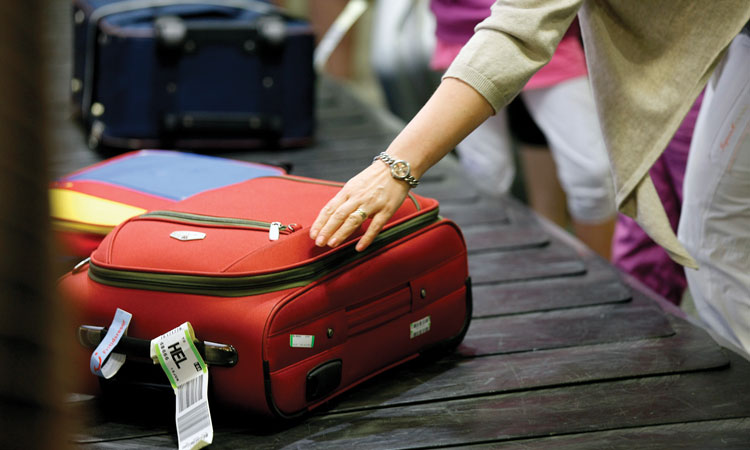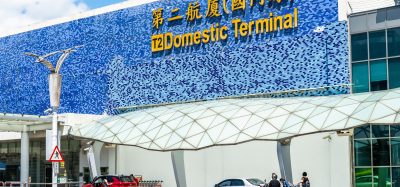Finavia speeds up air travel with the latest technology
- Like
- Digg
- Del
- Tumblr
- VKontakte
- Buffer
- Love This
- Odnoklassniki
- Meneame
- Blogger
- Amazon
- Yahoo Mail
- Gmail
- AOL
- Newsvine
- HackerNews
- Evernote
- MySpace
- Mail.ru
- Viadeo
- Line
- Comments
- Yummly
- SMS
- Viber
- Telegram
- Subscribe
- Skype
- Facebook Messenger
- Kakao
- LiveJournal
- Yammer
- Edgar
- Fintel
- Mix
- Instapaper
- Copy Link
Posted: 19 October 2015 | Heini Noronen-Juhola | No comments yet
The Finnish Airport operator Finavia is constantly investing in making the passenger experience at its 24 airports as smooth as possible. Vice-President of Aviation and Safety at Finavia’s Helsinki Airport, Heini Noronen-Juhola, explains that technology plays a key role in the development.


Our network of airports had 19.7 million airline passengers in 2014 in total, of which close to 16 million passengers passed through Helsinki Airport. Our airports are known for their modern feel, design-consciousness and efficiency.
Finavia has been gradually adding automatic functions to its airports in order to make travel easier and faster. Increasing the number of machines is a global trend in air traffic services. Self-service, such as bag drop machines, makes the check-in times of passengers more flexible, evens out the busy periods at the airport, and increases the check-in capacity of terminals. More effectively produced airport services also provide airlines with cost advantages, which are also ultimately the precondition for moderate flight ticket prices.
We want to utilise technology in making the travel process smoother. For example at Helsinki Airport, we have 30 automatic border control gates, 60 check-in kiosks and 14 bag drop automats.
Self-service bag drop available in Helsinki, Oulu and Turku
Our first self-service bag drop machines were brought to Helsinki Airport for pilot use in 2012. The pilot was successful and the amount of bag drop machines was increased.
Today, Helsinki Airport features 14 Type 22 Scan&Fly Self Bag Drops for passengers to check-in their hold baggage. Luggage and back-bags can now be dropped off conveniently as self-service, for Finnair, Norwegian and SAS flights. The bag drop machines at Helsinki Airport are located in both terminals T1 and T2. Later in 2016, Terminal 2 check-in at Helsinki Airport will get even more bag drop machines.
As of September 2014, the passengers of Oulu Airport have had the opportunity to use the self-service bag drop machines as well. Currently at Oulu airport, the machines are in use for Finnair flights.
The latest and third airport to feature the bag drops is Turku Airport where the bag drop machines have been available before the summer.
Self-service bag drop brings flexibility
The bag drop machines allow the passengers to check-in their luggage according to their own schedule. A passenger using self-service may come to the airport well in advance of the flight. They can check-in their luggage to be carried in the cargo hold earlier than before. Manned check-in desks are often opened only two hours before the scheduled departure. Consequently, machines will make check-in more flexible.
Bag drop machines facilitate the proceedings in the departure hall during the busiest times of the day. With the bag drop machine, passengers can drop their bags themselves to be transported in the cargo hold after machine or online check-in. As a result of self-service, once the passenger has arrived at the airport, they can move towards the departure gate more quickly and smoothly.
Passengers print out a baggage label with the check-in machine and attach the label to their bag. At the bag drop machine, the passenger scans the baggage label, and then the bag is ready for the flight.
The automated self-service machines are easy to use. They provide the user with clear instructions in several languages. For those passengers who are uncomfortable using the machines, assistance is always available; our service staff in the departure hall will be happy to assist in using the machines. Traditional check-in and bag drop is also always available.
Of course, this type of automated technology might be completely new for many passengers and will require a bit of getting used to at first. However, I believe that once the passengers have tried out the machine, they will notice how easy it is to use which should make them more likely to use the self-service machines to check in their luggage the next time they travel.
More benefits will be available once the number of people using self-service increases. In the near future, luggage tags printed at home will increase the number of bag drop machine users further.
Finavia follows the usage rate and measure how much the machines speed up travel times. Based on the results, we will make decisions regarding 2016.
Automation and technology play a key role in airport development
Increasing the extent of machines and self-service at Helsinki Airport and other main Finavia airports is part of our substantial investment package. Finavia has a strong willingness to develop Helsinki Airport and other airports. We want to utilise technology in making the travel process smoother.
In addition to the self-service check-in and bag drop, Helsinki Airport also has one of the most extensive border control machine lines in Europe. Altogether we have a total of 30 border control machines.
We have also installed digital eGate boarding machines to three gates at Helsinki Airport. The eGate machines make the boarding process to the aircraft more efficient. There will be less queuing while boarding when the passengers scan their boarding passes themselves at the machine. The eGates will be taken into use later this fall.
At some of Helsinki Airport’s security control points we have digital boarding pass readers, which fasten the security control. Passengers are required to show their boarding pass to the security officers at the security control. Being able to scan the boarding pass at the machine makes security control more efficient and once again decreases the amount of queuing.
There is no doubt whether we will be the ‘first movers’ in adapting the newest and most upcoming developments and technologies – be sure that we will. Smooth travelling is our key promise and we work to live up with that.
Helsinki Airport getting ready for 20 million passengers
Helsinki Airport is undergoing a significant development programme which will prepare the airport for the increase of passenger volume. It has been estimated that the annual passenger volume of Helsinki Airport will increase from the current 16 million to 20 million by 2020.
The development programme of €900 million has been launched by making the check-in process smoother. The aim of the development programme is to ensure smooth service and the airport’s strong competitive position in transfer traffic between Europe and Asia as the passenger volume increases.
The development programme takes place between 2014 and 2020. It is expected to have an employment impact of 14,000 person-years. In addition, approximately 5,000 permanent jobs will be created at the airport in various companies.
Biography
Heini Noronen-Juhola is the Vice President of Aviation and Safety at Helsinki Airport. Her duties include (winter-) maintenance, rescue operations, aviation electricity, apron control, apron services, baggage handling systems, business jet operations, plus environment and airside safety. She joined Finavia in 2008 and previously worked in the high-tech development and venture capital industry. Heini has a Master of Science degree from the Helsinki University of Technology.


















